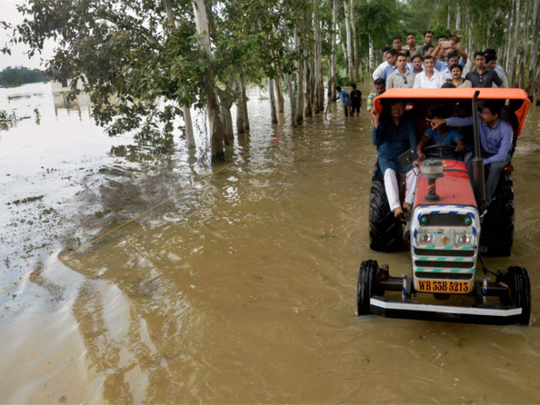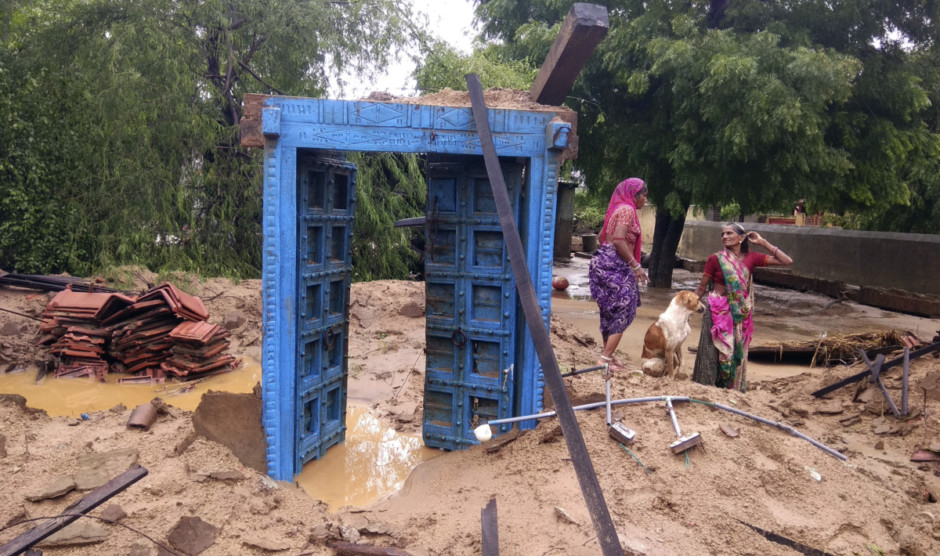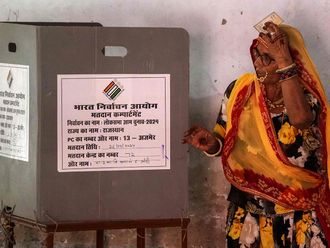
New Delhi: In India, floods are a common occurrence every monsoon but this year the situation is particularly dire with states such as Gujarat, Rajasthan, Assam, West Bengal and Manipur reporting massive damage to life and property.
Indian Minister of State for Home Affairs Kiren Rijiju on Thursday informed Lok Sabha (Lower House of Parliament) that as many as 600 people lost their lives so far to this year’s floods that began in the Northeast and spread to rest of India.
In June, India’s Meteorological Department recorded “extreme rainfall” in Meghalaya, Tripura and Arunachal Pradesh. In some areas in Meghalaya, the rainfall was as much as 162 mm in 24 hours. According to National Disaster Management Authority (NDMA), on an average every year, 7.5 million hectare of land is affected, 1,600 lives are lost and the damage caused to crops, houses and public utilities due to floods is worth Rs18 billion.
Rijiju says calling a disaster a natural calamity is not enough.
“Every state is given the first installment for disaster relief during the first week of April. The second installment is given when a disaster strikes. The inter-ministerial team will decide on additional amount, if needed, so that the states get funds earlier,” he told Gulf News.
The Comptroller and Auditor General’s recent report said a majority of India’s flood forecast systems have either been washed away or their parts have been stolen.
“Nearly 60 per cent of the 375 telemetry stations set up between 1997 and 2016 are non-operational which defeats the purpose of investing in the modernisation of flood forecast network,” the CAG report points out.
Climate change experts feel a rise in extreme rainfall events is the consequence of a spike in temperatures across India in recent decades. “This year’s intense flooding in the desert states, particularly Rajasthan, has led to an obvious question: is climate change the culprit? It is now well established that fluctuations in rain patterns across the country are a fall-out of global warming,” AK Srivastava, senior weather expert at IMD, Pune, told Gulf News.
In addressing the problem of floods, the focus of the Indian government over the years has been on engineering solutions. “Apart from the massive investments in large dams, India has already constructed over 35,000 km of embankments. But these are rapidly reaching their limits. Instead, India needs better weather and flood forecasting, along with flood insurance,” PG Dhar Chakrabarti, former executive director, National Institute of Disaster Management, told Gulf News.
Experts feel that floods cause extremely large numbers of fatalities in every country, but due to India’s extremely high population density, a large amount of damages are allowed to happen.
“Dramatic changes in weather patterns are witnessed in India. The western drought-prone areas are flooded while the fertile northern plains are drying up. Climate change is already harming people and ecosystems. Its reality can be seen in melting glaciers, disintegrating polar ice, changing monsoon patterns, rising sea levels, changing ecosystems and fatal heat waves,” explains Srivastava.
It is believed that the greatest impact of climate change will be on the developing countries like India which are least able to protect themselves from rising sea levels.
“There will be spread of disease and declines in agricultural production in the developing countries of Africa, Asia and the Pacific. At all scales of climate change, developing countries like India will suffer the most. The existing risks of species extinction and biodiversity loss will increase,” Chakrabarti states.
Floods cause huge fatalities in India due to its extremely high population density. “India is the most vulnerable country in the world to climate change and should demonstrate leadership to tackle the problem. India will have to shed its old mantras that its emission levels per capita are very low and that we did not contribute to global warming. We made a decisive break from these arguments in 2009 as no other country in the world has as much to lose as India on account of global warming,” former Union Environment Minister Jairam Ramesh told Gulf News.















